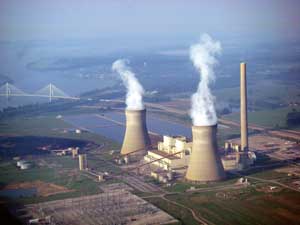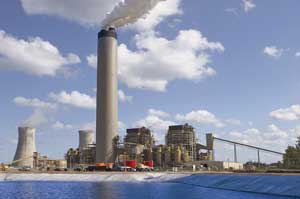-
News
Proposed 4,440-MW Offshore Wind Farm in Lake Erie Is Awaiting Govt. Approval
Canadian Hydro Developers last week agreed to buy the rights to a proposed 4,440-MW offshore wind project—what could possibly be the largest offshore wind facility in the world—in Lake Erie from Utah-based Wasatch Wind, but the company later acknowledged that the Ontario government had not yet granted it the rights to build the farm.
-
News
Alcoa Fights North Carolina’s Push to Control Yadkin Hydroelectric Dams
Alcoa Power Generating (APGI) has countered North Carolina’s alleged efforts to seize its privately owned hydropower business along the Yadkin River by filing a formal response with the Federal Energy Regulatory Commission (FERC), the company said on Tuesday.
-
News
NRG Tests Growing Biomass for Use at Major Louisiana Coal Plant
A pilot project begun at NRG Energy’s 1,700-MW Big Cajun II power plant will evaluate local conditions for growing switchgrass and high-biomass sorghum and determine if they could replace a portion of the plant’s combusted coal to reduce its carbon intensity. The project could lead to commercial-scale projects that would substitute biomass for some of the coal burned at NRG’s other carbon-intensive plants, the company said last week.
-
News
DOE Announces First Awards for CCS Projects from $1.4 Billion Recovery Act Funding
Twelve U.S. carbon capture and storage (CCS) projects will be the first to receive grants from the $1.4 billion allocated by the American Recovery and Reinvestment Act, the Energy Department said on Friday.
-
General
Climate Policy High Road and Low Road
By Kennedy Maize Oh! ye’ll take the high road and I’ll take the low road, And I’ll be in Scotland afore ye– Old Scottish folk ballad When it comes to climate legislation, the Obama administration has chosen the low road – administrative action by the Environmental Protection Agency. At the same time, the administration is […]
-
Coal
Top Plants: Nebraska City Station Unit 2, Nebraska City, Nebraska
Omaha Public Power District commissioned Unit 2 at its Nebraska City Station in May of this year. The new 682-MW unit joins Unit 1, which went commercial 30 years ago in the same month. The project is outfitted with all the requisite air quality control systems and sports a very good thermal efficiency. More importantly, the plant will provide reasonably priced power for customers of eight municipal utilities that share ownership of the plant’s electrical output. Those utilities paid for their portion of the construction cost and now receive a like portion of the electrical output from Unit 2 under a unique participation power agreement.
-
Coal
Top Plants: Rockport Power Plant, Rockport, Indiana
Hard work was required at the 2,600-MW Rockport Plant to make improvements to equipment, materials, and processes. But that hard work has paid off: The plant’s units operate much better, employee safety has improved, the facility is setting generation records with both of its 1,300-MW units, and it earned the PRB Coal Users’ Group Large Plant of the Year honors.
-
Environmental
PNNL Pioneers New Sulfur and Carbon Dioxide Scrubbing Liquid
A reusable organic liquid developed by the U.S. Department of Energy’s Pacific Northwest National Laboratory (PNNL) to remove carbon dioxide (CO2) or sulfur dioxide (SO2) from power plant emissions could one day replace current scrubbing methods and allow power plants to capture the gases in a cost-efficient way that uses no water and less energy.
-
Coal
Top Plants: Seminole Generating Station, Palatka, Florida
Complying with a corporate environmental policy requires much more than just writing a check for equipment upgrades. It takes a dedicated and knowledgeable staff that’s willing to invest years of work to permanently reduce a plant’s environmental footprint. The staff of Seminole Generating Station have completed multiple, incremental plant improvements over the past decade that have significantly reduced air emissions and minimized solid waste disposal.
-
Nuclear
Using the Sterling Engine for Solar and Lunar Power
Since Robert Stirling invented the Stirling engine in 1816, it has been used in an array of specialized applications. That trend continues today. Its compatibility with clean energy sources is becoming apparent: It is an external combustion engine that can utilize almost any heat source, it encloses a fixed amount of a gaseous working fluid, and it doesn’t require any water — unlike a steam engine.
Search






